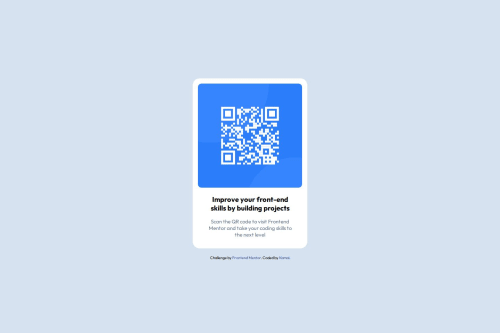qr-code-component using HTML+CSS

Solution retrospective
Thank you
What challenges did you encounter, and how did you overcome them?Thank you
What specific areas of your project would you like help with?Thank you
Please log in to post a comment
Log in with GitHubCommunity feedback
- @TedJenkler
Hi @Kamalep,
Here are a few suggestions to further improve your work:
Semantic Elements: Try to use semantic elements like <main> and <footer> in all projects, especially when including a Frontend Mentor footer link and a main content area. This practice enhances SEO and accessibility, making your site more user-friendly and search-engine optimized.
Flexbox for Layout: Instead of relying heavily on margins and padding, it's best practice to use Flexbox and gap for layout management. This simplifies the structure and reduces complexity, particularly in larger projects. Add margins and padding only when necessary to keep the design clean and maintainable.
SEO Practice: This project is an excellent opportunity to practice SEO by adding a descriptive title and meta description. After implementing these, share your project on Discord or social media to observe the differences in visibility and engagement.
Keep up the great work!
Marked as helpful - @YacoubDweik
معلم! بس لا تعطي عرض , اعطي خاصية اقصى عرض عشان يكون الموقع اموره ممتازة على التلفون , كمان استعمل عناصر الها معنى اكثر لا تضلك تستخدم ديف ديف ديف لا استعمل ارتكل سكشن وهكذا
Marked as helpful - @moizk744
Amazing brother
Join our Discord community
Join thousands of Frontend Mentor community members taking the challenges, sharing resources, helping each other, and chatting about all things front-end!
Join our Discord